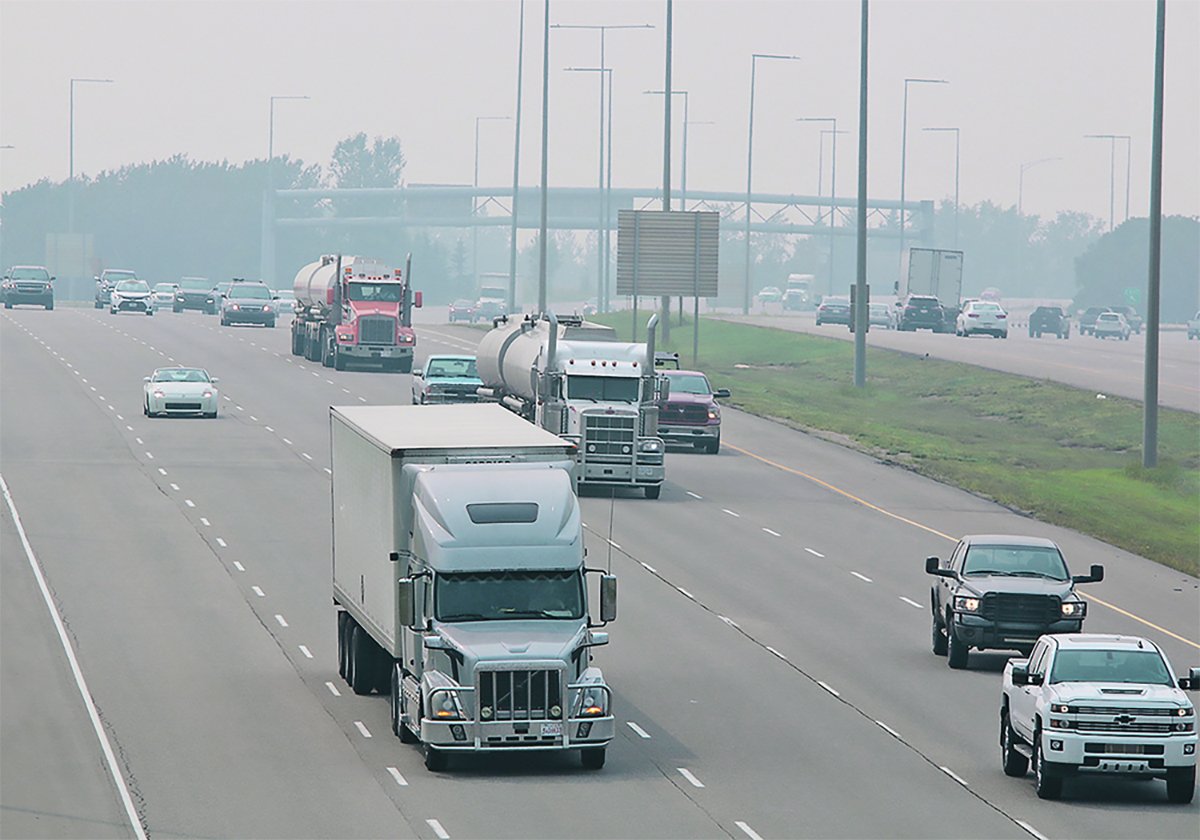Governments will spend $20 million to help lower the odds of another spring of devastation in the Red River Valley.
The federal government has allocated $12 million and the provincial government $8 million to help people raise foundations or build dikes to two feet above the 1997 flood level, or move into ring-diked towns.
Some money will be used for building new ring dikes and improving others.
“What we want to do is demonstrate some long-term vision and some long-term stability for the valley so people will be able to withstand floods,” said Glen Cummings, minister of natural resources.
Read Also

Alberta cracks down on trucking industry
Alberta transportation industry receives numerous sanctions and suspensions after crackdown investigation resulting from numerous bridge strikes and concerned calls and letters from concerned citizens
Governments will pay 75 percent of the cost of raising, diking or moving, to a maximum of $30,000 per family.
Farmers whose homes and farm buildings were damaged may be eligible for twice that amount, depending on the situation, Cummings said.
The Manitoba Agricultural Credit Corporation will provide loans for the rest of the costs. Cummings said there won’t be caps on loans for approved projects.
Valley residents who take part in the flood-proofing program won’t have to pay a 20 percent deductible for government compensation they receive for damages.
Local governments will have to kick in 10 percent of the cost for ring dikes around communities.
The program is modelled on a similar initiative from 1979 that led to many farm houses and buildings being built on large pads of earth.
The $20 million committed to this year’s flood-proofing program is less than half of what governments expect to spend over the next couple of years.
Cummings said priority this year will be given to the worst-damaged buildings. About 70 homes were destroyed in spring floods.
“We appreciate that time has now run out for them to make decisions and still achieve goals before the building season is over,” he said.
The provincial government announced funding July 16, and the federal government followed on July 17.
Cummings insisted the negotiations on flood compensation have been cordial. Farmers in the valley just wish the negotiations were going faster, said Les Jacobson, president of Keystone Agricultural Producers.
“They’re feeling frustrated because they can’t get on with their lives, and until yesterday, they didn’t know what kind of decisions they were going to have to make as far as flood prevention for the future,” he said July 18.
KAP has been kept out of negotiations, but has tried to keep tabs on how things are going, Jacobson said.
He expects farmers will know by July 25 precisely what kind of compensation they will get.
“Another month, probably, and producers are going to be in the field again. Fall is coming, and construction workers can only work until it freezes up,” Jacobson said. “So if they were ever planning on doing it this year, time’s awasting.”
The governments signed a memorandum of understanding for $270 million in flood compensation on May 1, but have been negotiating the finer points of the agreement since.














